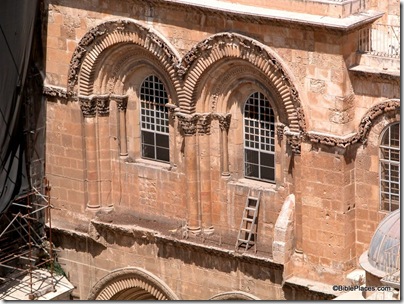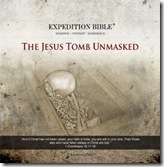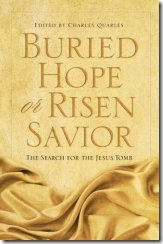If you’ve ever wondered what the background is for the fistfights, the unmoving ladder, or the eternal state of disrepair of the Church of the Holy Sepulcher in Jerusalem, this essay by Raymond Cohen at The Bible and Interpretation is well worth reading. Cohen goes back to the Crusader period to explain where the “Status Quo” came from and how it has evolved over the centuries. The following paragraphs may stir your interest, and if the article itself does not satisfy, you can pick up Cohen’s recent book, Saving the Holy Sepulchre: How Rival Christians Came Together to Rescue their Holiest Shrine (New York: Oxford University Press, 2008).
Out of communion for centuries, six ancient churches are represented today at the Holy Sepulchre by communities of monks. The three major communities administering the Holy Sepulchre, the Greek Orthodox, Roman Catholics—represented by the Franciscan Order—and Armenian Orthodox have their own chapels and share common areas, which include the stone of unction, the edicule containing Christ’s tomb, and surrounding paving. Two minor communities, the Coptic Orthodox and Syrian Orthodox, have rights of usage, but no say in the running of the church. The tiny Ethiopian Orthodox community, living on the roof, has no rights in the Anastasis….
In some respects, the Status Quo functions like a railway timetable, specifying for every day of the ecclesiastical year the time and place of services and processions conducted by the communities in public areas of the church. It also acts as a sort of property register, detailing possession of every stone and nail. Not a carpet can be laid, a candle lit, or a step swept unless it is the custom….
In the end, an inoffensive compromise design was agreed upon by church leaders and inaugurated in January 1997, enabling the scaffolding disfiguring the rotunda to come down. However, the restoration was unfinished: The edicule was left untouched, visibly disintegrating and only held together by steel bands; paving throughout the church was cracked and shabby; the electrical and sewage systems badly needed renovation, as did the malodorous public latrines….
You can read the whole thing here.


